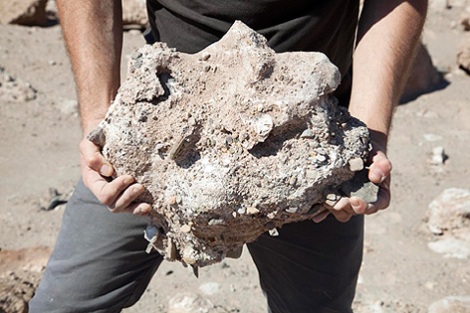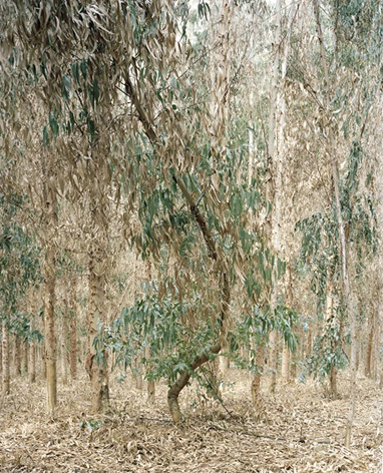
Jon Goodbun, Louise Purbrick, Lindsay Bremner, Mark Campbell, Ignacio Acosta, Andre Viljoen and Karin Jaschke, CUE Symposium, February 13, 2013, University of Brighton.
On Wednesday February 13th, I took part in the third Critical Urban Ecologies (CUE) Symposim at the University of Brighton, with Louise Purbrick, Ignacio Acosta, Mark Campbell and Andre Viljoen. Karin Jaschke of the University of Brighton presented the event and Jon Goodbun of the University of Westminster and the Royal Academy chaired the panel discussion.
Louise Purbrick, and Ignacio Acosta Gomez-Lomo presented their work on the mining landscapes of Chile, as part of their AHRC funded project Mining Chile: Traces of Nitrate.

Caliche sample, courtesy Traces of Nitrate: History and Photography Between Britain and Chile, 1879-1914
Traces of Nitrate explores the histories and legacies of British investment in Chilean nitrate mines and involvement in its global trafficking. Through an examination of sites, artefacts and images, the project traces nitrate’s route from its natural mineral state in the Atacama desert through transported commodity and stock market exchanges to become part of the material and symbolic inheritances of London mansions and estates. It undertakes new photographic documentation of geographically disparate but historically connected landscapes, remote nitrate fields and metropolitan financial districts, accompanied by an analysis of nitrate’s material and visual culture.
As a basic ingredient of both fertilizers and explosives, nitrate was intimately connected with the industrialization of life and death, yet an account of its production and trade, including the pivotal role played by British merchant houses and adventure capitalists, is quite unfamiliar beyond specific research communities devoted to Latin America economic development. Thus, Traces of Nitrate, directly addresses a lack of historical understanding and cultural awareness of the significance of the nitrate industry by disseminating its research through a photographic exhibition and programme of public events as well as scholarly publications aimed at interest groups in and outside the university sector. The project seeks to uncover the extent to which a once highly prized mineral was at the centre of the relationship between Britain and Chile between 1879 and 1914 and how, in this period between the beginning of the Pacific War and the outbreak of the First World War, it was connected to fortunes of the City of London and the ports of Liverpool, Pisagua and Iquique.
Ignacio Acosta Gomez-Lomo is a PHD student associated with the Mining Chile: Traces of Nitrate project, undertaking his work on the legacy of the Chilean copper mining industry and its historical relationship with Britain, mapping their post-imperial networks and circuits of exchange. Ignacio uses photography to document both architectural configurations and altered landscapes that are the result of the production and trade of copper. He investigate how the historical legacies of mining appear in contemporary landscapes, using photography to represent hidden or neglected colonial histories. One of the images, below, taken from his website shows an artificially created forest of eucalyptus in the desert of Atacama, which exists to assimilate contaminated water residues from one of the world’s most profitable mining operations.
